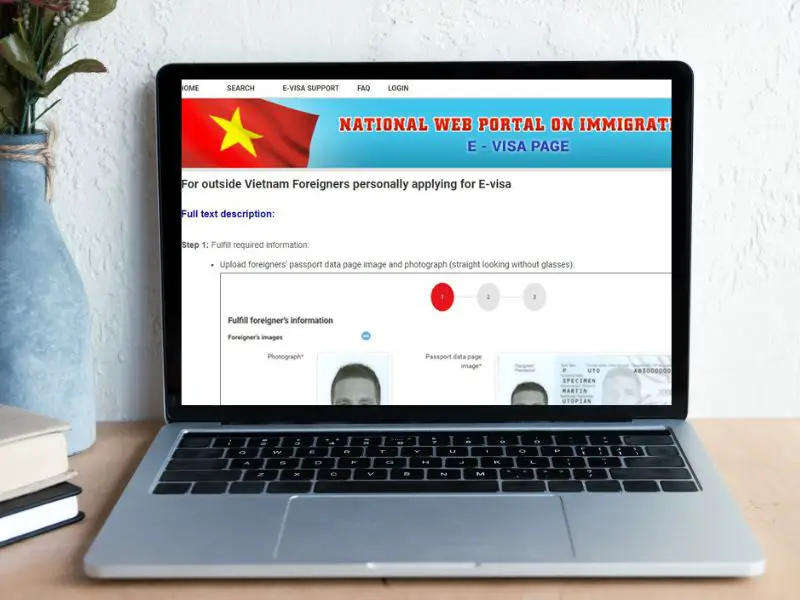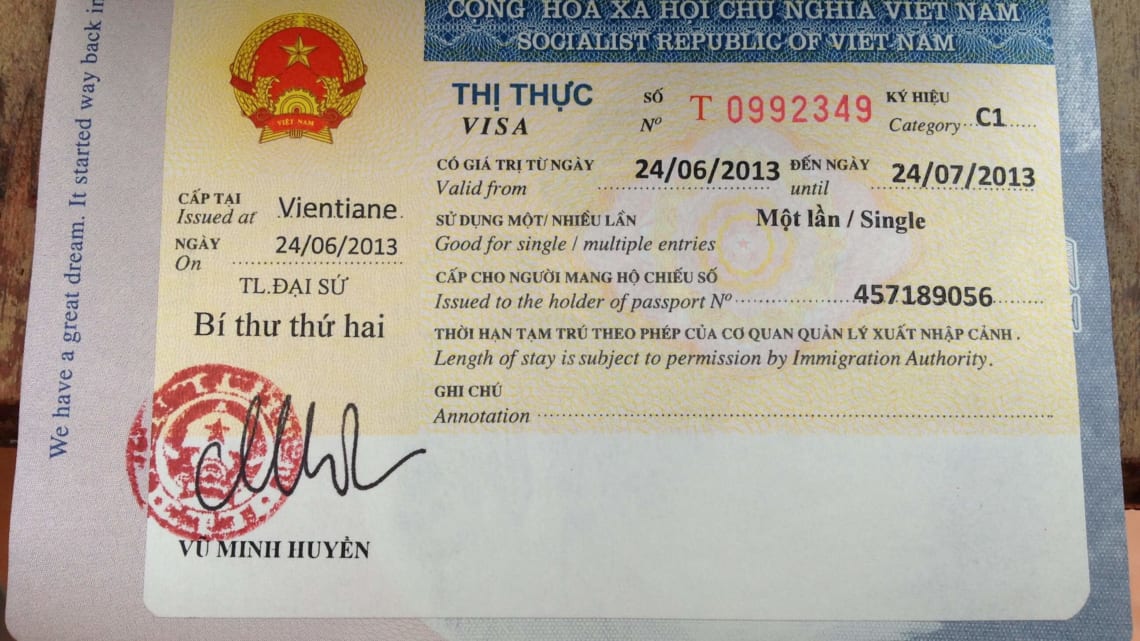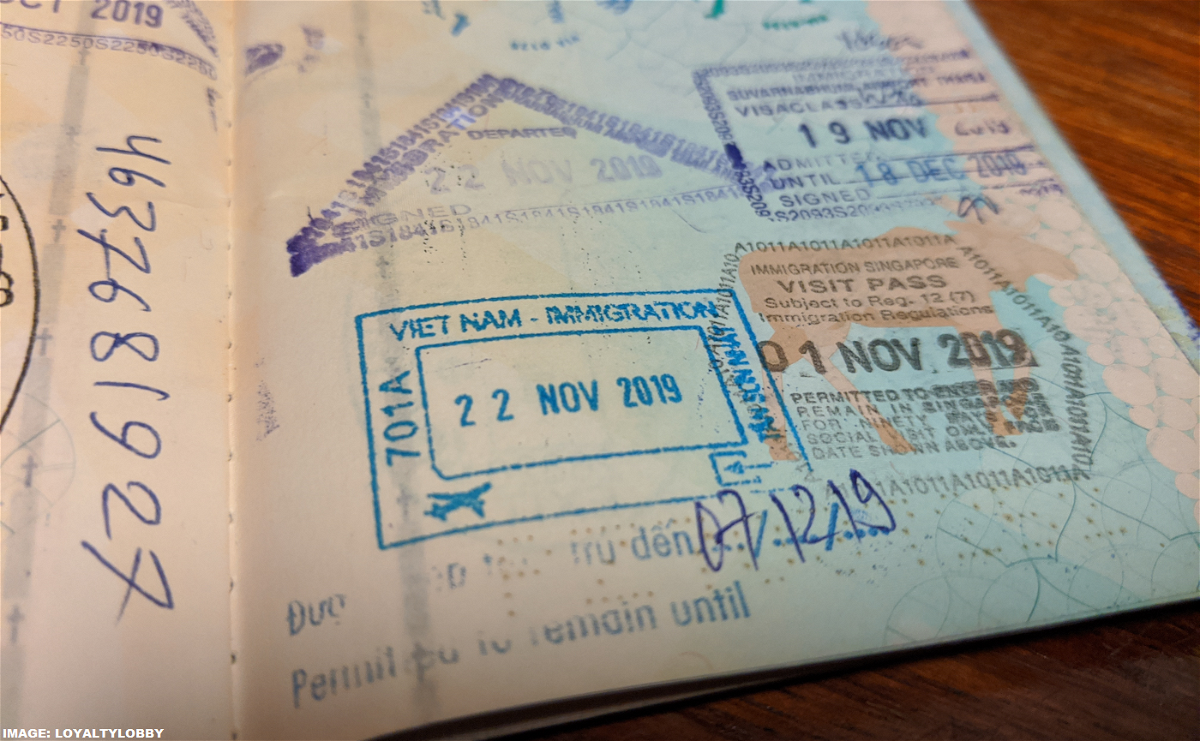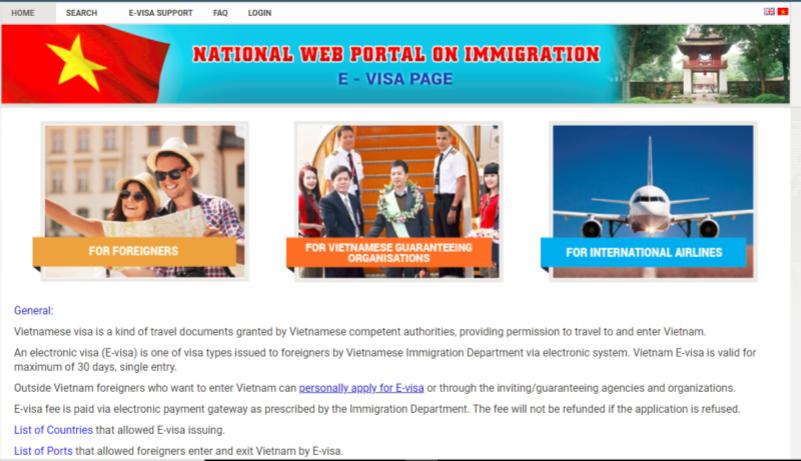Vietnam issues e-visa has implemented an electronic visa (e-visa) system for foreign visitors who wish to enter the country. This online service allows travelers to apply for and obtain their visas electronically, reducing the need for physical paperwork and streamlining the visa application process. The e-visa system provides convenience and efficiency for visitors, as it eliminates the need to visit an embassy or consulate in person.
Table of Contents
Vietnam’s E-visa Program: Overview and Eligibility Requirements
Vietnam is a beautiful country located in Southeast Asia that attracts millions of tourists each year. As part of their efforts to make travel to Vietnam more accessible, the government has implemented an electronic visa (e-visa) program.
The e-visa program was first launched in February 2017 and allows travelers from 80 countries, including the United States, Australia, and Canada, to apply for visas online. This has made it easier for travelers to plan and prepare for their trip to Vietnam.
Eligibility Requirements for Vietnam E-visa Program:
- Passport Requirement To be eligible for an e-visa, you must have a valid passport issued by a country on the e-visa eligibility list. The passport must have at least six months validity remaining from the date of entry into Vietnam.
- Purpose of Travel The e-visa program is available for travelers visiting Vietnam for tourism or business purposes. If you are planning on studying or working in Vietnam, you will need to apply for a different type of visa.
- Length of Stay The e-visa allows for a maximum stay of 30 days in Vietnam. If you plan on staying longer than 30 days, you will need to apply for a different type of visa.
- Entry Points The e-visa allows for entry at any of the designated international airports or land border crossings in Vietnam. It is important to note that some border crossings may require additional documentation or fees.
- Payment The e-visa application fee is non-refundable and must be paid online using a credit or debit card. The fee varies depending on the country of origin but generally ranges from $25-$50 USD.
- Personal Information The e-visa application requires personal information such as your full name, date of birth, nationality, passport number, and contact information. You will also need to provide a recent digital photo and a scanned copy of your passport.
- Timeline It is recommended that you apply for an e-visa at least 3-5 days before your intended travel date. The processing time is typically 3 business days, but it may take longer if additional documentation is required.
In conclusion, the Vietnam e-visa program is a convenient and simple way to obtain a visa for tourism or business purposes. By meeting the eligibility requirements and submitting the necessary documents and payment online, travelers can enjoy a hassle-free trip to Vietnam. It is important to note that the e-visa is only valid for a maximum stay of 30 days and is not suitable for those planning on studying or working in Vietnam.

How to Apply for a Vietnam E-Visa: Step-by-Step Guide
Vietnam is a country in Southeast Asia with a rich cultural heritage and breathtaking natural beauty. It’s popular among tourists for its bustling cities, delicious cuisine, and scenic landscapes. If you’re planning to travel to Vietnam, you’ll need a visa to enter the country. Thankfully, Vietnam offers an electronic visa (e-visa) that can be applied for online. Here’s a step-by-step guide on how to apply for a Vietnam e-visa.
Step 1: Check your eligibility
Before applying for a Vietnam e-visa, it’s important to check if you are eligible for one. Citizens of over 80 countries are eligible for e-visas, including the United States, Canada, Australia, and most of Europe. You can check if your country is eligible by visiting the Vietnam Immigration Department’s website.
Step 2: Gather the required documents
To apply for a Vietnam e-visa, you’ll need to gather the following documents:
- A passport with at least six months’ validity remaining
- A digital passport photo
- A valid email address
- A credit/debit card for payment
It’s important to ensure that your passport photo meets the requirements set out by the Vietnamese government. The photo should be a recent, color photo of yourself against a white background.
Step 3: Apply for the e-visa online
Once you’ve checked your eligibility and gathered your documents, you can apply for the e-visa online. To do so, follow these steps:
- Visit the Vietnam Immigration Department’s website.
- Click on ‘E-visa’ on the homepage.
- Click on ‘For foreigners’ and select your nationality from the drop-down menu.
- Fill in the application form with your personal details and upload your passport photo.
- Review your application and make any necessary corrections.
- Pay the fee using your credit/debit card.
- Wait for your e-visa to be processed and sent to your email address.
The processing time for e-visas is usually around three working days, but it can take longer during peak travel seasons. It’s important to apply for your e-visa well in advance of your travel date to avoid any delays or issues.
Step 4: Print out your e-visa
Once you’ve received your e-visa via email, you’ll need to print it out and bring it with you when you travel to Vietnam. The e-visa will be valid for a single entry into Vietnam and allows you to stay in the country for up to 30 days.
In conclusion, applying for a Vietnam e-visa is a relatively straightforward process that can be completed online in just a few steps. By following this step-by-step guide, you can ensure that you have all the necessary documents and information to apply for your e-visa successfully and enjoy your trip to Vietnam hassle-free.

Frequently Asked Questions about the Vietnam E-Visa Program
The Vietnam e-visa program is a digital system that allows foreign nationals to apply for a visa to enter Vietnam online. This program was launched in February 2017, and it has become increasingly popular since then. If you are planning on traveling to Vietnam and are considering applying for an e-visa, here are some frequently asked questions about the Vietnam e-visa program that can help you better understand the process.
Q: What is an e-visa? A: An e-visa is an electronic version of a traditional visa that is issued by the Vietnamese government. It is obtained online and allows travelers to enter and exit Vietnam for a specific period of time.
Q: Who is eligible for the Vietnam e-visa program? A: Citizens of over 80 countries are currently eligible for the Vietnam e-visa program. You can check if your country is on the list by visiting the website of the Vietnam Immigration Department.
Q: How long does it take to process an e-visa application? A: The processing time for an e-visa application is usually between 3-5 business days. However, during peak travel periods, it may take longer.
Q: How long is the e-visa valid for? A: The e-visa is valid for a maximum of 30 days from the date of entry into Vietnam.
Q: Can I extend my e-visa? A: No, you cannot extend your e-visa. If you need to stay in Vietnam for longer than 30 days, you will need to apply for a traditional visa or leave the country and re-enter with a new e-visa.
Q: What documents do I need to apply for an e-visa? A: The documents required for an e-visa application vary depending on your nationality. Typically, you will need a passport with at least 6 months validity, a recent color photograph of yourself, and a credit card or debit card to pay the e-visa fee.
Q: How much does it cost to apply for an e-visa? A: The cost of an e-visa is currently $25 USD. This fee is non-refundable and must be paid online at the time of application.
Q: Can I enter Vietnam at any international airport or border checkpoint with an e-visa? A: No, you cannot enter Vietnam at all international airports or border checkpoints with an e-visa. Currently, there are 28 designated entry points that accept e-visas. You can find a full list on the website of the Vietnam Immigration Department.

Traveling to Vietnam with an E-Visa: Tips and Recommendations
Firstly, it’s important to note that not all countries are eligible for an E-Visa. Before applying, make sure your country is on the list of eligible countries. You can check this on the Vietnamese government’s website or through a reliable travel agency.
Once you’ve confirmed your eligibility, you can begin the application process. The E-Visa application usually takes around 3 business days to process, but it’s recommended to apply at least one week before your trip to allow for any potential delays.
After receiving your visa authorization letter via email, print a copy and carry it with you when you travel to Vietnam. You’ll need to present it along with your passport and any other required documents at the airport. Keep in mind that the E-Visa is only valid for single-entry and for stays up to 30 days.
When traveling to Vietnam, there are a few things to keep in mind to ensure a smooth and enjoyable trip. Here are some tips:
- Bring adequate cash: While credit cards are accepted in larger cities, it’s still a good idea to bring enough cash with you for day-to-day expenses, particularly if you plan to travel to rural areas.
- Dress appropriately: Vietnam has a conservative culture, so it’s important to dress modestly, especially when visiting temples or other religious sites.
- Be cautious with street food: Vietnamese street food is delicious and a must-try, but make sure to choose reputable vendors to avoid getting sick.
- Learn some basic Vietnamese: While many people in Vietnam speak English, it’s always appreciated when visitors make an effort to speak the local language. Learning some basic phrases like “hello” and “thank you” can go a long way.
- Respect local customs: As mentioned earlier, Vietnam has a conservative culture, so it’s important to be respectful of local customs and traditions. For example, removing your shoes before entering a home or temple, or not touching someone’s head.
Traveling to Vietnam with an E-Visa is a convenient and straightforward process that can make your trip stress-free. Just make sure to plan ahead, follow the application guidelines, and keep these tips in mind for a memorable journey.

How to Check Your Vietnam E-Visa Status and Extend Your Stay
If you are planning a trip to Vietnam, you may require an e-visa. An e-visa is an electronic visa that allows you to enter Vietnam for tourism or business purposes. It is valid for 30 days and can be extended up to 60 days. In this article, we will guide you on how to check your Vietnam e-visa status and how to extend your stay.
Checking Your Vietnam E-Visa Status
Step 1: Visit the Vietnamese Immigration website.
The first step to checking your Vietnam e-visa status is to visit the Vietnamese Immigration website at https://evisa.xuatnhapcanh.gov.vn/trang-chu-ttdt
Step 2: Enter your e-visa information.
On the homepage of the Vietnamese Immigration website, there is a section where you can enter your e-visa information. You will need to enter your registration code, date of birth, and email address. After entering this information, click on “Search” to proceed.
Step 3: Check your e-visa status.
After clicking on “Search,” you will see the status of your e-visa. If your e-visa has been approved, you will be able to download it from the website. If it is still processing, you will need to wait until it is approved.
Extending Your Stay in Vietnam
Step 1: Visit the local immigration office.
If you want to extend your stay in Vietnam beyond the initial 30-day period, you will need to visit the local immigration office. You can find the location of the immigration office on the Vietnamese Immigration website.
Step 2: Fill out the form.
At the immigration office, you will need to fill out an application form to request an extension of your e-visa. The immigration officer will provide you with the necessary forms and instructions.
Step 3: Submit the required documents.
In addition to the application form, you will need to submit a copy of your passport, your e-visa, and a passport-sized photograph. You may also need to provide proof of your travel itinerary and your financial situation.
Step 4: Pay the fee.
After submitting the required documents, you will need to pay a fee for the extension of your e-visa. The fee varies depending on how long you want to extend your stay in Vietnam.
Step 5: Wait for approval.
Once you have submitted your application and paid the fee, you will need to wait for approval. The immigration officer will review your application and notify you when your e-visa has been extended.
Conclusion
Checking your Vietnam e-visa status and extending your stay in Vietnam is a straightforward process. By following the steps outlined in this article, you can easily check the status of your e-visa and extend your stay if necessary. Remember to plan ahead and give yourself plenty of time to complete the necessary paperwork and pay the fees. With your e-visa in order, you can enjoy all that Vietnam has to offer.
The website www.visaonlinevietnam.org is an online information and service site specializing in Vietnamese visas. With the purpose of supporting and simplifying the visa application process, this website provides detailed information about visa types such as tourist visa, business visa, work visa and visit visa.